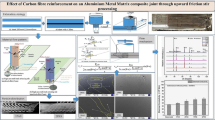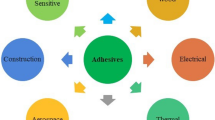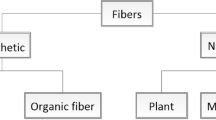Abstract
A gel-forming cerium dioxide (CeO2) fixed abrasive tool for quartz glass polishing was proposed to improve abrasive utilization. The effects of the solid content of polyvinyl alcohol (PVA) and phenolic (PF) resin on the mechanical properties, micromorphology, and friction properties of gel-forming CeO2 abrasive tools were analyzed. The effects of dispersant and coupling agents on the micromorphology of the gel-forming CeO2 abrasive tools were analyzed. The microstructure uniformity, hardness uniformity, and friction coefficient stability of the gel-forming and the hot pressing forming CeO2 abrasive tools were compared and analyzed. The polishing effects of the gel-forming CeO2 abrasive tools, hot pressing CeO2 abrasive tools and ceria slurry on quartz glass were compared. The results showed that when the solid content of PVA was 6 wt%, the solid content of PF was 8 wt%, the concentration of the PEI dispersant was 1 wt% and the KH550 coupling agent concentration was 1.5 wt%, the mechanical properties and friction performance of the gel-forming CeO2 abrasive tools is the best. Gel-forming abrasive tools were superior to hot pressing abrasive tools in terms of microstructure uniformity, hardness uniformity, and friction coefficient stability. The polishing experiments showed that after polishing by the gel-forming abrasive tool, the average surface roughness Ra reached 2.49 nm, which was better than polishing by the hot pressing abrasive tools and reached the polishing effect of ceria slurry. The flatness PV reached 0.660 µm, which was far better than that of ceria slurry.

























Similar content being viewed by others
References
Nguyen, K. H., Lee, P. A., & Kim, B. H. (2015). Experimental investigation of ECDM for fabricating micro structures of quartz. International Journal of Precision Engineering and Manufacturing, 1(16), 5–12. https://doi.org/10.1007/s12541-015-0001-9
Wang, Z., Li, H. N., Yu, T. B., Chen, H., & Zhao, J. (2019). On the predictive modelling of machined surface morphology in abrasive air jet polishing of quartz glass. International Journal of Mechanical Sciences, 152, 1–18. https://doi.org/10.1016/j.ijmecsci.2018.12.041
Choi, J., Shin, C., Yang, J., Chae, S. K., & Kim, T. (2019). Effect of ceria abrasive synthesized by supercritical hydrothermal method for chemical mechanical planarization. ECS Journal of Solid State Science and Technology, 8(5), 3128–3132.
Lee, S. I., Hwang, J., Kim, H., & Jeong, H. (2007). Investigation of polishing characteristics of shallow trench isolation chemical mechanical planarization with different types of slurries. Microelectronic Engineering, 84(4), 626–630. https://doi.org/10.1016/j.mee.2006.12.004
Zhou, Y., Luo, H., Luo, G., Chen, G., Kang, C., & Pan, G. (2020). Chemical mechanical polishing (CMP) of fused silica (FS) using ceria slurry recycling. ECS Journal of Solid State Science and Technology, 9(4), 044002.
Kelsall, A. (1998). Cerium oxide as a mute to acid free polishing. Glass Technology, 39(1), 6–9.
Hoshino, T., Kurata, Y., Terasaki, Y., & Susa, K. (2001). Mechanism of polishing of SiO2 films by CeO2 particles. Journal of Non-Crystalline Solids, 283(1–3), 129–136. https://doi.org/10.1016/S0022-3093(01)00364-7
Peng, W., Guan, C., & Li, S. (2014). Material removal mechanism of ceria particles with different sizes in glass polishing. Optical Engineering, 53(3), 035104. https://doi.org/10.1117/1.OE.53.3.035104
Guo, X. G., Yuan, S., Huang, J. X., Chen, C., Kang, R. K., Jin, Z. J., & Guo, D. M. (2020). Effects of pressure and slurry on removal mechanism during the chemical mechanical polishing of quartz glass using ReaxFF MD. Applied Surface Science, 505, 144610. https://doi.org/10.1016/j.apsusc.2019.144610
Myong, K. K., Byun, J., Choo, M. J., Kim, H., Kim, J. Y., Lim, T., & Kim, J. J. (2021). Direct and quantitative study of ceria-SiO2 interaction depending on Ce3+ concentration for chemical mechanical planarization (CMP) cleaning. Materials Science in Semiconductor Processing, 122, 105500. https://doi.org/10.1016/j.mssp.2020.105500
Peng, W. Q., Guan, C. L., & Li, S. Y. (2014). Defect-free surface of quartz glass polished in elastic mode by chemical impact reaction. Journal of Central South University, 21(12), 4438–4444.
Wakamatsu, K., Kurokawa, S., Toyama, T., & Hayashi, T. (2019). CMP characteristics of quartz glass substrate by aggregated colloidal ceria slurry. Precision Engineering-Journal of the International Societies for Precision, 60, 458–464. https://doi.org/10.1016/j.precisioneng.2019.06.014
Zhang, Z. T., Yu, G. D., Zhou, Y., Dong, L., Sun, Q. X., Jia, X. L., & Shao, G. S. (2015). A Novel strategy for the synthesis of CeO2/CeF3 composite powders with improved suspension stability and chemical mechanical polishing (CMP) performance. Arabian Journal for Science and Engineering, 40(10), 2897–2901. https://doi.org/10.1007/s13369-015-1847-y
Kwak, D., Kim, J., Oh, S., Bae, C., & Kim, T. (2020). Application of electrospray-scanning mobility particle sizer for the measurement of sub-10 nm chemical mechanical planarization slurry abrasive size distribution. Review of Scientific Instruments, 91(7), 075117. https://doi.org/10.1063/5.0007167
Wei, Q. L., Li, X. Y., Gao, W., Wang, C., & He, J. G. (2015). Dispersion behavior of particles in concentrated nano-ceria slurries. Rare Metal Materials and Engineering, 44(9), 2265–2269.
Lin, B., Jiang, X. M., Li, S. P., & Cao, Z. C. (2019). Mechanism of material removal by fixed abrasive lapping of fused quartz glass. Journal of Manufacturing Processes, 46, 279–285. https://doi.org/10.1016/j.jmapro.2019.08.030
Fu, Y. C., & Li, Y. G. (2014). Glass polishing with bound-abrasive vibrating polishing tools. Journal of Optoelectronics and Advanced Materials., 16(1–2), 70–75.
Choi, J. Y., & Jeong, H. D. (2004). A study on polishing of molds using hydrophilic fixed abrasive pad. International Journal of Machine Tools and Manufacture, 44(11), 1163–1169. https://doi.org/10.1016/j.ijmachtools.2004.04.006
Enomoto, T., Satake, U., Fujita, T., & Sugihara, T. (2013). Spiral-structured fixed-abrasive pads for glass finishing. CIRP Annals—Manufacturing Technology, 62(1), 311–314. https://doi.org/10.1016/j.cirp.2013.03.011
Tang, H. Y., Yang, W., Liu, W. J., Ma, J. L., & Luo, X. Y. (2020). Characteristic of fixed abrasive polishing for fused silica in anhydrous environment. Optik, 202, 163623. https://doi.org/10.1016/j.ijleo.2019.163623
Tian, Y. B., Zhong, Z. W., & Ng, J. H. (2013). Effects of chemical slurries on fixed abrasive chemical-mechanical polishing of optical silicon substrates. International Journal of Precision Engineering and Manufacturing, 14(8), 1447–1454. https://doi.org/10.1007/s12541-013-0195-7
Kim, H. M., Venkatesh, R. P., Kwon, T. Y., & Park, J. G. (2012). Influence of anionic polyelectrolyte addition on ceria dispersion behavior for quartz chemical mechanical polishing. Colloids and Surfaces A: Physicochemical and Engineering Aspects, 411, 122–128. https://doi.org/10.1016/j.colsurfa.2012.07.009
Cheng, J., Huang, S., & Lu, X. C. (2020). Preparation of surface modified ceria nanoparticles as abrasives for the application of chemical mechanical polishing (CMP). ECS Journal of Solid State Science and Technology, 9(2), 024015.
Chandra, A., Karra, P., Bastawros, A. F., Biswas, R., Sherman, P. J., Armini, S., & Lucca, D. A. (2008). Prediction of scratch generation in chemical mechanical planarization. CIRP Annals—Manufacturing Technology, 57(1), 559–562. https://doi.org/10.1016/j.cirp.2008.03.130
Kwon, T. Y., Cho, B. J., Ramachandran, M., Busnaina, A. A., & Park, J. G. (2013). Investigation of source-based scratch formation during oxide chemical mechanical planarization. Tribology Letters, 50(2), 169–175. https://doi.org/10.1007/s11249-012-0098-2
Ring, T. A., Feeney, P., Boldridge, D., Kasthurirangan, J., Li, S., & Dirksen, J. A. (2007). Brittle and ductile fracture mechanics analysis of surface damage caused during CMP. Journal of the Electrochemical Society, 154(3), 239–248.
Suratwala, T., Steele, R., Feit, M. D., Wong, L., Miller, P., Menapace, J., & Davis, P. (2007). Effect of rogue particles on the sub-surface damage of fused silica during grinding/polishing. Journal of Non-Crystalline Solids, 354(18), 2023–2037. https://doi.org/10.1016/j.jnoncrysol.2007.11.015
Miao, W. P., Ding, Y. L., Zhao, Y. J., Bao, H., Yan, N., Yang, W., Hui, Z., & Liu, B. (2019). Modified gel casting technique to fabricate honeycomb structured vitrified-bonded ultrafine diamond grinding wheels. Ceramics International, 46, 462–4469. https://doi.org/10.1016/j.ceramint.2019.10.172
Huang, S. G., Lu, J., Lin, Y. C., Yu, Y. Q., Xu, X. P., & Cui, C. C. (2020). Study on the enhancement of sol–gel properties by binary compounding technology for dry polishing hard and brittle materials. Journal of Sol–Gel Science and Technology, 96, 314–326. https://doi.org/10.1007/s10971-020-05339-3
Luo, Q. F., Lu, J., Li, Z., & Wang, J. (2020). Fabrication of a sol–gel polishing tool for green manufacturing of the seal stone. Journal of Sol–Gel Science and Technology, 96, 576–588. https://doi.org/10.1007/s10971-020-05358-0
Lu, J., Luo, Q. F., Song, Y. Y., Hu, G. G., & Xu, X. P. (2015). Fabrication and application of gel-bonded ultrafine diamond abrasive tools. Journal of Mechanical Engineering, 51(15), 205–212. (in Chinese).
Zhang, W., Liu, X. P., Chen, S. P., Wan, L., Li, J. W., & Liao, M. Y. (2020). Variations in structure and properties of vitrified bonds and vitrified diamond composites prepared by sol–gel and melting methods at different sintering temperature. Ceramics International, 46, 21202–21210. https://doi.org/10.1016/j.ceramint.2020.05.202
Lozinsky, V. I., Leonova, I. M., Ivanov, R. V., & Bakeeva, I. V. (2017). A study of cryostructuring of polymer systems. 46. physicochemical properties and microstructure of poly(vinyl alcohol) cryogels formed from polymer solutions in mixtures of dimethyl sulfoxide with low-molecular-mass alcohols. Colloid Journal, 79, 788–796. https://doi.org/10.1134/S1061933X17060114
Meacham, R., Liu, M., Guo, J., Zehnder, A. T., & Hui, C. Y. (2020). Effect of hydration on tensile response of a dual cross-linked PVA hydrogel. Experimental Mechanics, 8, 1161–1165. https://doi.org/10.1007/s11340-020-00598-1
Lozinsky, V. I., Kolosova, O. Y., Michurov, D. A., Dubovik, A. S., Vasilev, V. G., & Grinberg, V. Y. (2018). Cryostructuring of polymeric systems. 49. Unexpected “Kosmotropic-Like” impact of organic chaotropes on freeze-thaw-induced gelation of PVA in DMSO. Gels, 4(4), 81. https://doi.org/10.3390/gels4040081
Prashanth, K. V. H., Lakshman, K., Shamala, T. R., & Tharanathan, R. N. (2005). Biodegradation of chitosan-graft-polymethylmethacrylate films. International Biodeterioration and Biodegradation, 56(2), 115–120. https://doi.org/10.1016/j.ibiod.2005.06.007
Nagahata, M., Nakaoka, R., Teramoto, A., Abe, K., & Tsuchiya, T. (2005). The response of normal human osteoblasts to anionic polysaccharide polyelectrolyte complexes. Biomaterials, 26(25), 5138–5144. https://doi.org/10.1016/j.biomaterials.2005.01.041
Fang, Z. C., & Suo, J. P. (2011). Synthesis and characterization of phenolic resol resin blended with silica sol and PVA. Journal of Applied Polymer Science, 119, 744–751. https://doi.org/10.1002/app.32741
Zhi, M. Y., Chen, X. T., Liu, Q. Y., & Jia, J. Y. (2018). Improved mechanical properties and thermal stability of phenol formaldehyde resin by incorporating poly(vinyl alcohol)-grafted reduced graphene oxide nanohybrid. Materials Research Express, 9(5), 095306. https://doi.org/10.1088/2053-1591/aad6c2
Oh, M. H., Nho, J. S., Cho, S. B., Lee, J. S., & Singh, R. K. (2011). Polishing behaviors of ceria abrasives on silicon dioxide and silicon nitride CMP. Powder Technology, 206, 239–245. https://doi.org/10.1016/j.powtec.2010.09.025
Shimono, N., Koyama, N., & Kawaguchi, M. (2006). Polymer adsorption effects on stabilities and chemical mechanical polishing properties of ceria particles. Japanese Journal of Applied Physics, 45(5), 4196–4200.
Xie, R. Q., Liao, D. F., Wang, X. B., Yuan, Z. G., Zhong, B., Chen, X. H., Wang, J., Lei, X. Y., & Hou, J. (2014). Fabrication of Nd:YAG crystal slab using composite lap. High Power Laser and Particle Beams, 26(1), 012007.
Acknowledgements
The authors gratefully acknowledge the financial support from the Natural Science Foundation of Zhejiang Province (No. LZY21E050004), Quzhou Science and Technology Planning Project (No. 2019K10).
Author information
Authors and Affiliations
Contributions
All authors read and approved the final manuscript.
Corresponding authors
Ethics declarations
Competing interests
The authors declare that they have no competing interests.
Additional information
Publisher's Note
Springer Nature remains neutral with regard to jurisdictional claims in published maps and institutional affiliations.
Rights and permissions
About this article
Cite this article
Feng, K., Lyu, B., Zhao, T. et al. Fabrication and Application of Gel-Forming CeO2 Fixed Abrasive Tools for Quartz Glass Polishing. Int. J. Precis. Eng. Manuf. 23, 985–1002 (2022). https://doi.org/10.1007/s12541-022-00687-2
Received:
Revised:
Accepted:
Published:
Issue Date:
DOI: https://doi.org/10.1007/s12541-022-00687-2




